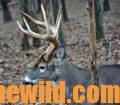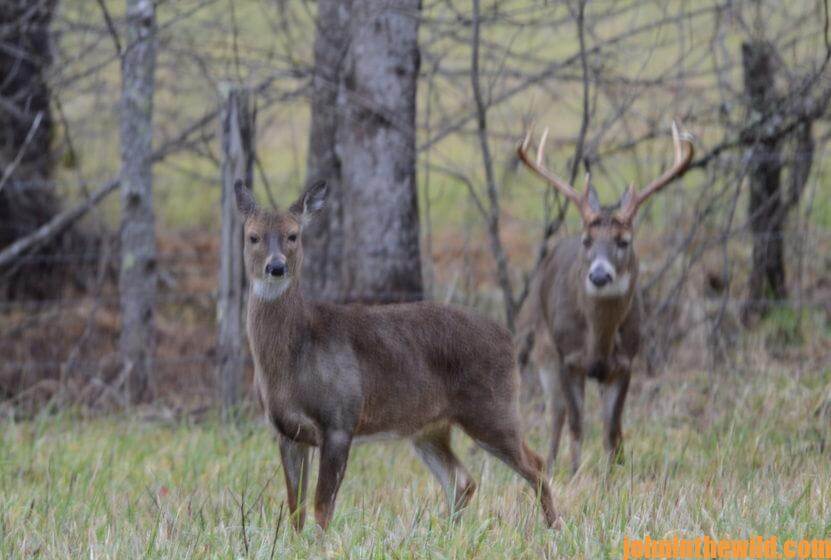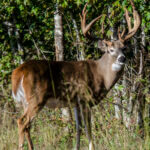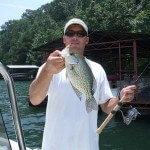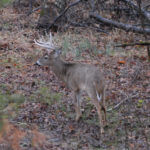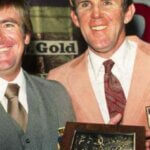Editor’s Note: Reading a deer’s body language will tell you when to draw, where to aim and what to anticipate will happen when you release the arrow. The deer’s body language also will tell you what type of shot to expect. More deer are bagged with bows and arrows by those who take the time to assess the deer’s mood and read the deer’s body language than by those who disregard what the animal is expressing, or what behavior the deer is demonstrating as he comes in for the shot. So, learn to read the deer’s body language and to anticipate the deer’s movements. You will shoot more accurately, bag more bucks and go home with more trophies.
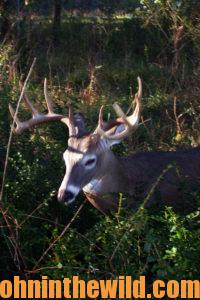 Because this deer probably will attempt to jump the string, you may want to shoot somewhat low on this deer, anticipating the squat. Take the first good shot you get at this deer because more than likely he will spot you before you shoot. This buck will come in very slowly to feed – often through a thicket. Usually he will stand in thick cover for a long time – looking up at the trees and out at the forest floor – before he comes in and then only will move a few yards at a time, stopping constantly to look in all directions and swishing his tail frantically as though he’s swatting a swarm of flies.
Because this deer probably will attempt to jump the string, you may want to shoot somewhat low on this deer, anticipating the squat. Take the first good shot you get at this deer because more than likely he will spot you before you shoot. This buck will come in very slowly to feed – often through a thicket. Usually he will stand in thick cover for a long time – looking up at the trees and out at the forest floor – before he comes in and then only will move a few yards at a time, stopping constantly to look in all directions and swishing his tail frantically as though he’s swatting a swarm of flies.
If does are in the area, he’ll continuously watch them to see if they exhibit any hint of danger. If they are feeding calmly, often a buck will lose some of his normal wariness and calm down. If no does are in a region, he will come very slowly into the area, turning to look at every sound. Every time a squirrel barks, a tree limb falls, or a woodpecker screams, this buck will jerk his head around. When he starts to put his head down to feed, he will pull it up quickly to see if any danger is present. Before he takes a step forward, usually he will look in at least three directions.
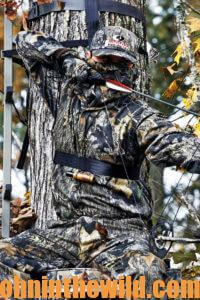 If he is eating acorns or shrubs, he will take the food into his mouth quickly and then bring his head up to chew. He often will swish his tail just before he brings his head up and puts his head down. This tail wagging may be the key factor to let you know when you can stand, and when you can draw. Study the deer to make sure he telegraphs his moods with his tail. Some deer do, and some deer do not. Count the number of seconds from the time the deer puts his head down until he picks it up again, which will help you pattern the deer’s movements.
If he is eating acorns or shrubs, he will take the food into his mouth quickly and then bring his head up to chew. He often will swish his tail just before he brings his head up and puts his head down. This tail wagging may be the key factor to let you know when you can stand, and when you can draw. Study the deer to make sure he telegraphs his moods with his tail. Some deer do, and some deer do not. Count the number of seconds from the time the deer puts his head down until he picks it up again, which will help you pattern the deer’s movements.
Once you establish a pattern, either by his tail swish or the number of seconds his head is down, you then will know when you can stand, and when you can draw, because the animal’s head will be down. If the deer brings his head up quickly and cocks it back to either the left or the right, there is a very-good chance he is about to break and run or at least to jump backwards.
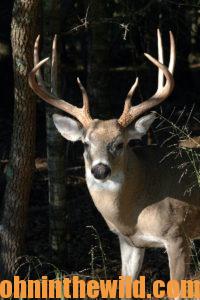 Usually if a deer becomes suspicious, he will pick his head up and back and begin to turn it in the direction he plans to run. At that moment, you must release the arrow if you are going to get a shot. Also you must understand the deer will drop down and jump in the direction in which his head is pointed. The buck’s head is the steering wheel of his body. If his head is up and back to the left when you release the arrow, more than likely he will squat and jump to the left. By anticipating this movement, you can aim a little low and to the left and bag the buck.
Usually if a deer becomes suspicious, he will pick his head up and back and begin to turn it in the direction he plans to run. At that moment, you must release the arrow if you are going to get a shot. Also you must understand the deer will drop down and jump in the direction in which his head is pointed. The buck’s head is the steering wheel of his body. If his head is up and back to the left when you release the arrow, more than likely he will squat and jump to the left. By anticipating this movement, you can aim a little low and to the left and bag the buck.
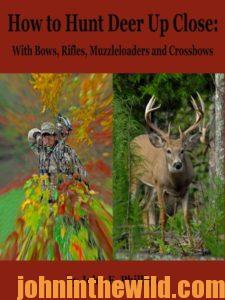 To learn more about hunting deer, check out John E. Phillips’ book, available in Kindle, print and Audible versions, “How to Hunt Deer Up Close: With Bows, Rifles, Muzzleloaders and Crossbows” http://amzn.to/11dJRu8. You may have to copy and paste this link into your browser. (When you click on this book, notice on the left where Amazon says you can read 10% of the book for free, and you can listen to 10% for free). On the right side of the page and below the offer for a free Audible trial, you can click on Buy the Audible book. To see more of John’s deer books, visit www.amazon.com/author/johnephillips.
To learn more about hunting deer, check out John E. Phillips’ book, available in Kindle, print and Audible versions, “How to Hunt Deer Up Close: With Bows, Rifles, Muzzleloaders and Crossbows” http://amzn.to/11dJRu8. You may have to copy and paste this link into your browser. (When you click on this book, notice on the left where Amazon says you can read 10% of the book for free, and you can listen to 10% for free). On the right side of the page and below the offer for a free Audible trial, you can click on Buy the Audible book. To see more of John’s deer books, visit www.amazon.com/author/johnephillips.
Tomorrow: Understanding Stomping Deer


